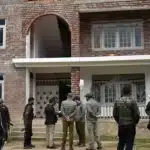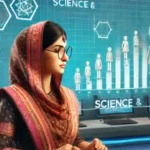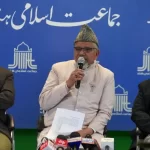A Kashmiri video journalist Tariq Lone was among the first journalists to cover the Kargil war in 1999. This is the account of reporting the war, in his own words: “When the Kargil broke out, I was working as a stringer for Doordarshan Srinagar. On the same day, I received a call from Bashir Malik, who was the editor at Doordarshan at that time. The official cameraman of Doordarshan was also called upon. A meeting took place, in which the official cameraman, the producer Dr Nazir, Shamsudin Shameen and editor Nazir Malik, including the DG news who had come from Delhi.
The official cameraman of Doordarshan was asked to go to Kargil and cover the war. The cameraman refused and gave different reasons and gave different reasons for their refusal.
The Editor Bashir Malik then requested me and Ashraf Wani to go to Kargil and cover the war for Doordarshan Srinagar.
Excited to cover the war, on that very day we tried to hire an ambassador car but nobody was ready to go then we assured one driver namely Ghulam Mohammad that he will be safe with us and there won’t be any problem in going to Kargil. To this day, I remember his vehicle number, which was JKT 3725. We paid him 5000 Rupees just to drop us in Kargil.
Upon reaching Zojila, we saw Indian army jets flying over us. We halted our vehicle and starting covering sequences of over-head fighting jets with my camera.
I also covered the passing convoy of Bofors Guns, which were being taken to the site of war in Kargil heights. Luckily, I met a truck driver who was on his way to Srinagar and I requested him to deliver the video-cassette to Bashir Malik at Doordarshan Srinagar office. I had to pay him Rupees 300 to make the delivery, which he agreed with. Fortunately, the truck driver successfully delivered the cassette to Bashir Malik at Doordarshan office. The Editor immediately uplinked the video to Delhi office, and our visuals became the first visual from Kargil War. Following this, even reputed media organizations like BBC, CNN and many other national news channels broadcasted my visuals as the first visual of Kargil War.
Upon entering the Drass town, we witnessed that everything had burned down in the town and nothing much was left. A few meters away, a tea vendor stood amid the war. To this day I remember his name Naseem, he was from Uttarakhand. Naseem, while pointing to the direction of Tiger Hill, cautioned us to remain safe from the Pakistani shelling and told us that we were the first media men who have arrived there. After sipping and taking rest, in about fifteen minutes, we left for our journey to Kargil heights, which was just 60 kilometres away but it took us 4 hours to reach as we had to negotiate and remain cautious of shelling of both India and Pakistan.
We reached Kargil at 11 pm in the night. Kargil was a ghost town. The situation was the same as in Drass, everybody had left all their belongings in their homes and left for the safe zones.
Upon reaching Kargil, we met one of our friend Dr Tasaduq who took us to his room and offered us food. The rice and dal we had at that moment felt like Wazwaan for us, as we were totally exhausted and hungry.
The following morning, we didn’t waste any time and left for the frontline. The moment we arrived at the frontline, the visuals were breath-taking. I will never forget those visuals; the shelling injured armed personnel and a destroyed vehicle.
I reported from the Kargil War for 2 months. In those moments, I felt very fortunate to be alive. In one of the incidents, we were travelling with a convoy when all of a sudden a shell hit the tanker which was driving just meters ahead of us.
After the war ended, I went to Tiger Hill where some dead bodies of Pakistani intruders were still lying about. The Indian army men gave the bodies a proper burial.
After 2 months, we left for Srinagar. I will never forget those days of my life. Those days were a nightmare for me and for everyone who was there covering the Kargil war.”
- Police Intensifies Crackdown Against Banned Seperatist Organization In North Kashmir
- Fire Broke Out In GMC Rajouri, No Major Damage Or Loss Of Life
- Women’s enrollment in higher education soars but not in Science and Engineering in Higher Education- Dr. Abrar Ahmad, IGNOU, New Delhi and Dr. Absar Ahmad, Birsa Agricultural University, Ranchi.
- Gulmarg fashion show was a private event, no Govt involvement, enquiry ordered: CM Omar Abdullah
- Number of sexual crimes against women alarming and unacceptable: JIH
- Schools reopen in Kashmir Valley after Winter Vacations






